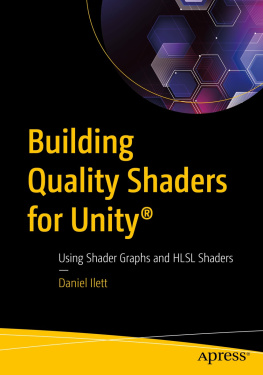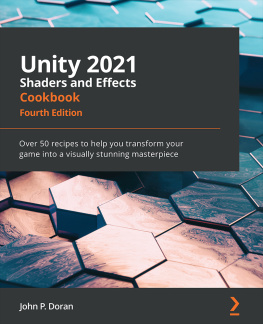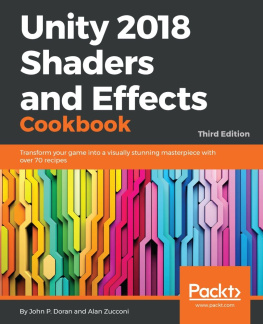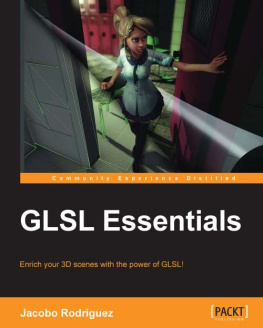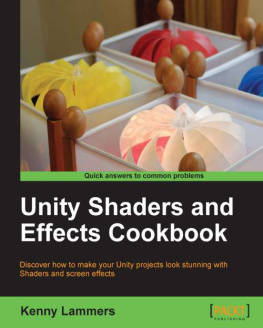Walt Ritscher - HLSL and Pixel Shaders for XAML Developers
Here you can read online Walt Ritscher - HLSL and Pixel Shaders for XAML Developers full text of the book (entire story) in english for free. Download pdf and epub, get meaning, cover and reviews about this ebook. year: 2012, publisher: OReilly Media, genre: Computer. Description of the work, (preface) as well as reviews are available. Best literature library LitArk.com created for fans of good reading and offers a wide selection of genres:
Romance novel
Science fiction
Adventure
Detective
Science
History
Home and family
Prose
Art
Politics
Computer
Non-fiction
Religion
Business
Children
Humor
Choose a favorite category and find really read worthwhile books. Enjoy immersion in the world of imagination, feel the emotions of the characters or learn something new for yourself, make an fascinating discovery.
- Book:HLSL and Pixel Shaders for XAML Developers
- Author:
- Publisher:OReilly Media
- Genre:
- Year:2012
- Rating:5 / 5
- Favourites:Add to favourites
- Your mark:
HLSL and Pixel Shaders for XAML Developers: summary, description and annotation
We offer to read an annotation, description, summary or preface (depends on what the author of the book "HLSL and Pixel Shaders for XAML Developers" wrote himself). If you haven't found the necessary information about the book — write in the comments, we will try to find it.
Pixel shaders are some of the more powerful graphic tools available for XAML programmers, but shader development bears little resemblance to traditional .NET programming. With this hands-on book, youll not only discover how to use existing shaders in your Windows Presentation Foundation (WPF) and Silverlight applications, youll also learn how create your own effects with XAML and Microsofts HLSL shading language.
In the process, youll write, compile, and test custom XAML shaders with the Shazzam Shader Editor, a free utility developed by author Walt Ritscher. The book includes XAML and C# sample code, and Shazzam contains all of the sample shaders discussed.
- Learn how shaders help you extend the GPUs rendering capabilities
- Explore prevailing shader types, such as color modification, blurring, and spatial transformation
- Get a quick tour of the shader features, and use pre-built effects on image elements in your application
- Examine the XAML ShaderEffect class to understand how WPF and Silverlight use shaders
- Learn about the shader-specific tools available in Visual Studio and Expression Blend
- Get up to speed on HLSL basics and learn how to create a variety of graphics effects
Walt Ritscher: author's other books
Who wrote HLSL and Pixel Shaders for XAML Developers? Find out the surname, the name of the author of the book and a list of all author's works by series.

